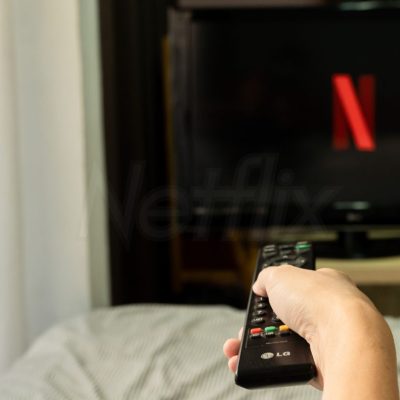When you stream a movie or show on Netflix, you expect smooth video, clear sound, and no strange stutters or drops in quality. Behind the scenes, Netflix’s engineers constantly work on fine-tuning how content is played across different devices so you can enjoy it the way it was meant to look and feel.
This guide breaks down how Netflix improves playback on streaming devices, what frame rate actually means, why your video sometimes doesn’t look as smooth as it should, and how you can check and optimize your own playback quality.
Why Frame Rate Matters
Every movie or TV show is filmed at a certain frame rate, which is the number of images shown per second. Most films are recorded at 24 frames per second (fps), while sports and some modern shows may use 50 or 60 fps for smoother motion.
When Netflix streams that content to your TV or device, it has to match the frame rate of the video with the refresh rate of your display — usually 50Hz in PAL regions or 60Hz in NTSC regions.
If the two don’t align perfectly, the playback system must duplicate frames to “fill in” the difference. This process is called Frame Rate Conversion (FRC).
While FRC keeps playback running, it can sometimes create small visual hiccups known as judder — those tiny, uneven motion jumps you may notice during panning scenes or slow camera movements.
Why Judder Happens
Judder usually appears when the frame rate of the content and the display don’t divide evenly — like trying to fit 24fps content into a 60Hz signal. The device has to repeat some frames more often than others, creating an inconsistent rhythm that your eyes can pick up.
This issue is more noticeable in regions using 50Hz displays because the conversion from 24fps to 50fps isn’t a neat ratio. The result? Some frames are repeated twice, others three times, and that irregular pattern causes visible stutter.
How Netflix Is Fixing It
Netflix uses several approaches to reduce judder and improve smoothness depending on what your device supports.
1. Matching HDMI Output to the Content’s Frame Rate
Many streaming devices — like Roku, Fire TV, and Apple TV — have settings called “Match Content Frame Rate” or “Auto Adjust Display Refresh Rate.”
When enabled, these options let the device automatically switch its output to match the video’s native frame rate (like 24fps for most movies).
This simple fix makes motion look natural, but older HDMI versions can cause a quick black screen or flicker when switching frame rates, as the TV and device resynchronize. It’s not harmful, just slightly distracting.
2. Seamless Switching with HDMI QMS
The latest HDMI 2.1 standard introduced Quick Media Switching (QMS) — a feature that eliminates that black-screen flicker entirely. QMS keeps the HDMI data rate steady while changing the frame rate, allowing instant, smooth transitions between videos.
The only drawback is that it’s still new, so not all TVs and devices support it yet.
3. Smart Frame Rate Conversion Inside the Netflix App
For devices that can’t handle frame rate switching, Netflix has developed its own way of reducing judder.
The app can slightly adjust the timing of how frames are presented, creating a more even playback rhythm. This minimizes visible stutter without needing any hardware support. It’s a clever workaround that quietly improves your experience without you ever noticing.
How Netflix Chooses Which Method to Use
The Netflix app automatically adapts based on three factors:
- Device capability: If your streaming stick or console supports native frame rate playback or QMS, Netflix will use it.
- User preference: If you’ve turned off “Match Frame Rate” in your device settings, Netflix respects that choice.
- Context: Netflix only applies native frame rate playback when you’re watching full-screen content. During browsing or previews, it keeps the interface running at a higher refresh rate to keep the menus smooth and responsive.
How to Check Your Netflix Playback Specs
Even with all these improvements, it’s good to check whether you’re getting the best quality your plan and device can offer. You can easily view your current playback details — resolution, bitrate, and more — depending on what device you’re using.
On Windows, Mac, or Linux
- Play any title on Netflix in your browser or app.
- Press Ctrl + Alt + Shift + D (Windows) or Control + Option + Shift + D (Mac).
- You’ll see a detailed overlay with resolution, bitrate, buffer health, and frame rate.
On Smart TVs
- Play a video and press the Info or Display button on your remote.
- If that doesn’t work, try the sequence: Up, Up, Down, Down, Left, Right, Left, Right, Up, Up, Up, Up — then select Get Info.
- You’ll get technical stats about your current playback.
On Android or iOS
- Open the Netflix app and go to your profile.
- Tap the menu icon (☰) → App Settings.
- Scroll to Playback Specification or Diagnostics to see details like:
- Maximum supported resolution (SD, HD, 4K)
- HDR support (HDR10, Dolby Vision)
- DRM security level (Widevine L1 for HD)
- Audio codec information (Stereo, 5.1, or Dolby Atmos)
Understanding the Key Terms
| Quality Level | Resolution | Recommended Speed |
|---|---|---|
| SD (Basic) | 480p | 3 Mbps |
| HD (Standard) | 720p–1080p | 5 Mbps |
| 4K Ultra HD (Premium) | 2160p | 25 Mbps |
- Bitrate: The amount of data per second — higher is better for quality.
- Frame Rate: Usually between 24 and 60 fps; higher means smoother motion.
- Buffer Health: Should stay above 90% for smooth streaming.
- HDR: Expands brightness and color for richer visuals.
How to Improve Your Playback Quality
- Check Internet Speed:
Run a test at fast.com — Netflix’s own tool — to see if you’re meeting the speed required for your chosen quality. - Adjust Playback Settings:
- Go to your Netflix profile → Playback Settings.
- Choose Auto (recommended), or manually select High for best quality.
- Optimize Your Network:
- Use a wired Ethernet connection if possible.
- Keep your Wi-Fi router close to your TV or streaming device.
- Avoid multiple devices streaming simultaneously.
- Verify Device Compatibility:
- 4K content requires a 4K TV, HDMI 2.0+ cable, and the Premium plan.
- Dolby Vision and Atmos need supported devices and hardware.
Common Questions
Why am I not getting 4K even with a Premium plan?
Check if your TV supports 4K, your HDMI cable is version 2.0 or higher, and your internet speed is at least 25 Mbps. Also, ensure your playback settings are set to “High.”
Why does my stream keep buffering?
Restart your router, close other streaming apps, or lower your playback quality temporarily. Buffering usually happens when your connection speed drops below Netflix’s required bitrate.
Why does the audio seem off or mismatched?
Ensure your device and audio setup support the correct format (like 5.1 or Atmos). Try switching to another title to confirm if it’s content-specific.
Conclusion
Netflix is doing far more behind the curtain than most viewers realize. From optimizing how video frames are sent to your TV, to adjusting playback timing and offering diagnostic tools, everything is aimed at giving you the smoothest, most immersive experience possible.
The next time you notice your stream looking unusually crisp or motion feeling lifelike, it’s likely the result of these quiet improvements — all working together to make sure your movie night feels just right.







